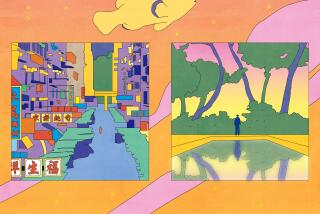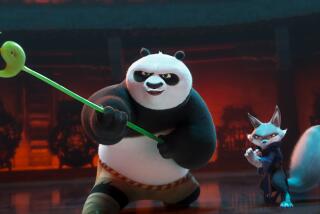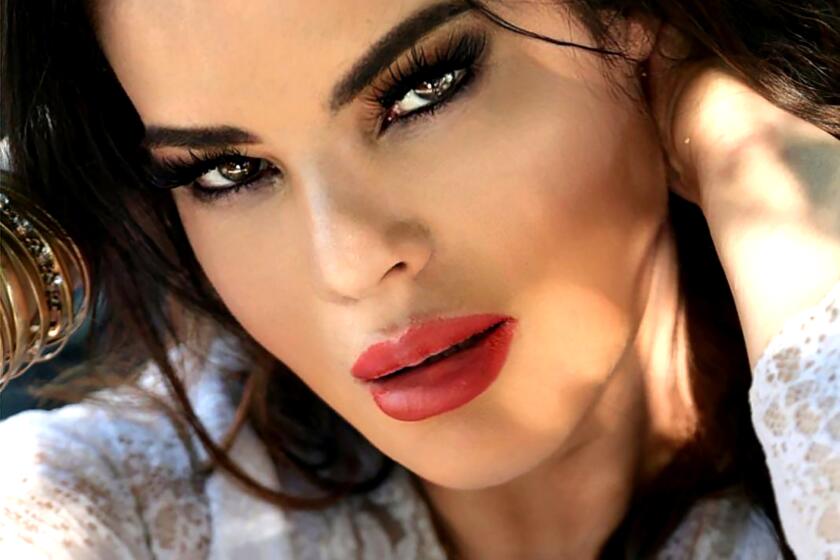‘One Piece’ review: A popular manga becomes a lively, nonsensical series
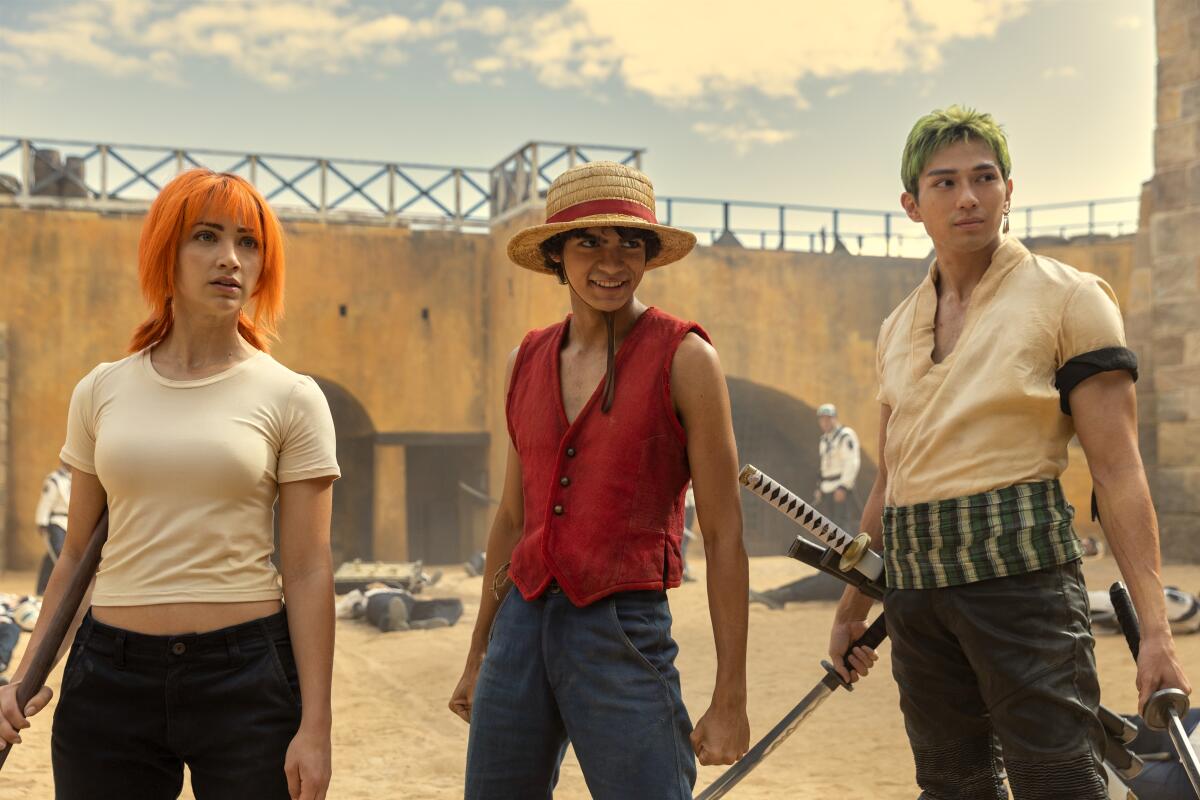
- Share via
Turning comics and cartoons into live-action movies and television, as the Blue Fairy transformed the puppet Pinocchio into a real boy, remains a popular industrial strategy in a world where proven intellectual property rules the roost. It’s not always successful, and, one might add, nothing new — the first movie of “Alice in Wonderland” dates to 1903 — but it’s where we live now and for the foreseeable future.
Which brings us to “One Piece,” premiering Thursday on Netflix, based on what is reportedly the world’s bestselling manga and the anime that followed it quickly into life. Being familiar only with the latter, I can’t say how much comes from the page and how much from the screen, but the main characters and story points of the anime are here, in recognizable form — as much as there is of it.
Written and drawn by Eiichirô Oda, the manga has been in progress since 1997, and the anime (which has logged more than a thousand episodes) since 1999. The opening season of this new version covers only the first 11 of 106 collected volumes and the first 44 episodes of the cartoon. (There have also been 15 feature films.) I assume some hopeful long-term plan has been filed — some money has been spent putting it together unlike, say, the streamer’s canceled-after-a-season “Cowboy Bebop” — but apart from the impossibility of ever catching up with a series with a quarter-century head start whose conclusion has yet to be written, the current economics of television suggest that only a small fraction of this saga will ever be filmed. (Sixty episodes of the anime are also streaming on Netflix.)
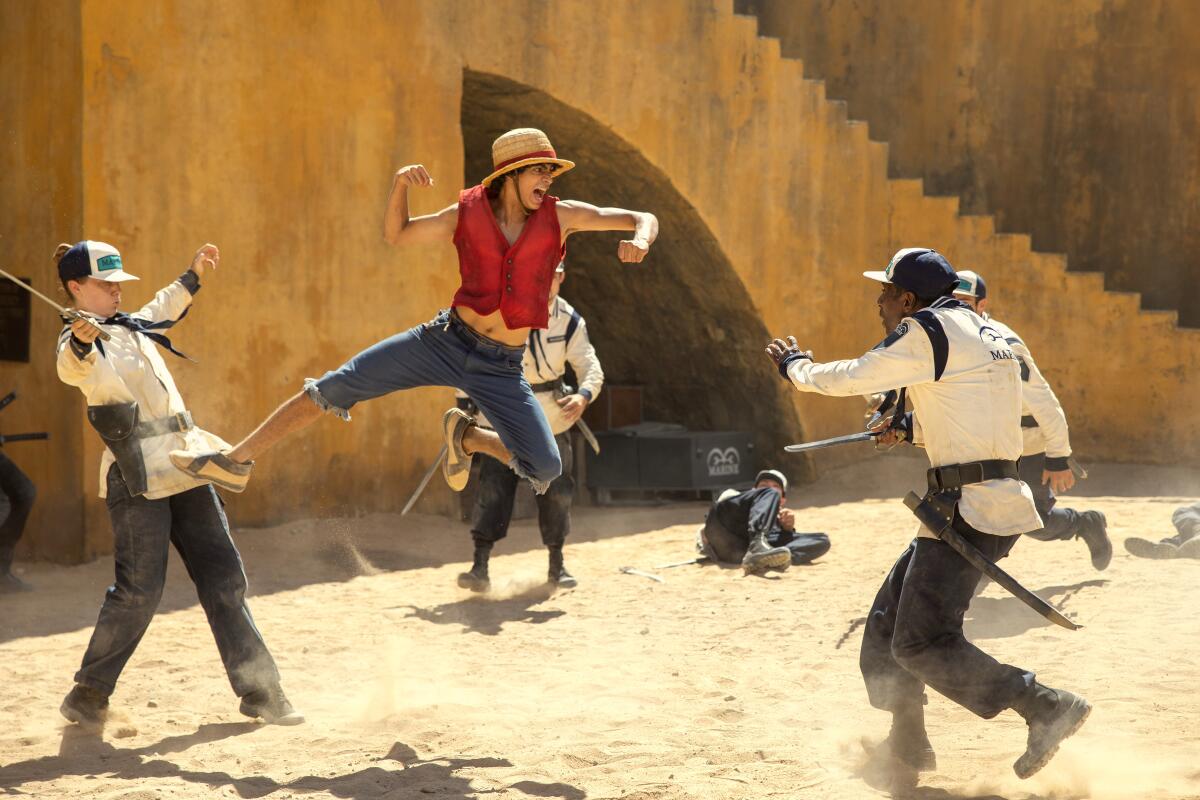
Taken on its own, the series, developed by Matt Owens and Steven Maeda, is lively and nonsensical. It is set in a world (not ours historically, geographically, zoologically) during a “great age of pirates,” who are all after the eponymous One Piece — a great undescribed treasure located somewhere in the Grand Line, which seems to be a belt of islands that circumnavigates the globe. (It has the reputation of being a “pirate’s graveyard,” for the weather, sea monsters and other pirates.) Though one might think it not hard to find — just sail until you hit it — a map to the place is the season’s major MacGuffin.
Monkey D. Luffy (Iñaki Godoy) is the hero, an aggressively enthusiastic, monomaniacal young man whose dream is not just to be a pirate, but to be King of the Pirates, an ambition he reiterates to the point of exhaustion and which the One Piece will somehow fulfill. What’s more, his body is made of rubber, the result of eating an exotic “devil fruit.” (Other devil fruit eaters, with different powers, will be met along the way, and they are all bad.) This will come in handy in the numerous fight scenes that pepper the series.
Luffy’s definition of piracy, which is not really shared by any of the series’ other pirates — though some are nicer than others — has nothing to do with actual piracy: “Being a pirate isn’t about raiding villages or perfect plans, it’s about adventure. And freedom.” There is a bit of Rebels versus Empire dynamic in this world, which has a single government and global naval police force, though morally it remains a little ambiguous. Just as there are good pirates and bad pirates, so there must be good and bad Marines, Luffy tells new friend Koby (Morgan Davies) whose dream is to join up. (That Luffy dreams of seeing his face on a wanted poster, alongside the pirates who constitute the story’s colorful villains, makes no real sense, but it‘s just one of several things here you should not think too hard about.)
Indeed, following one’s dream is the story’s supreme moral good. In “Wizard of Oz” fashion, Luffy picks up associates as he goes, each with their own agenda. Roronoa Zoro (Mackenyu Arata), is a pirate hunter (just another apparent contradiction), whose desire is to become the world’s greatest swordsman. Nami (Emily Rudd) is a thief, though not, she repeatedly declares, a pirate; her veiled mission is at the heart of the series’ one substantial story arc. Usopp (Jacob Gibson) has a Munchhausen-like habit of fibbing about his adventures, but would like to actually have some, and Sanji (Taz Skylar), a master chef, is in search of something called the All Blue, which the show never gets around to describing, though more immediately he would like someone to appreciate his True Bluefin sauté with seared asparagus and a sweet soy reduction. Each has a particular fighting skill, as well, and all are working out childhood traumas, established in flashback, which is about as psychologically deep as the series goes.
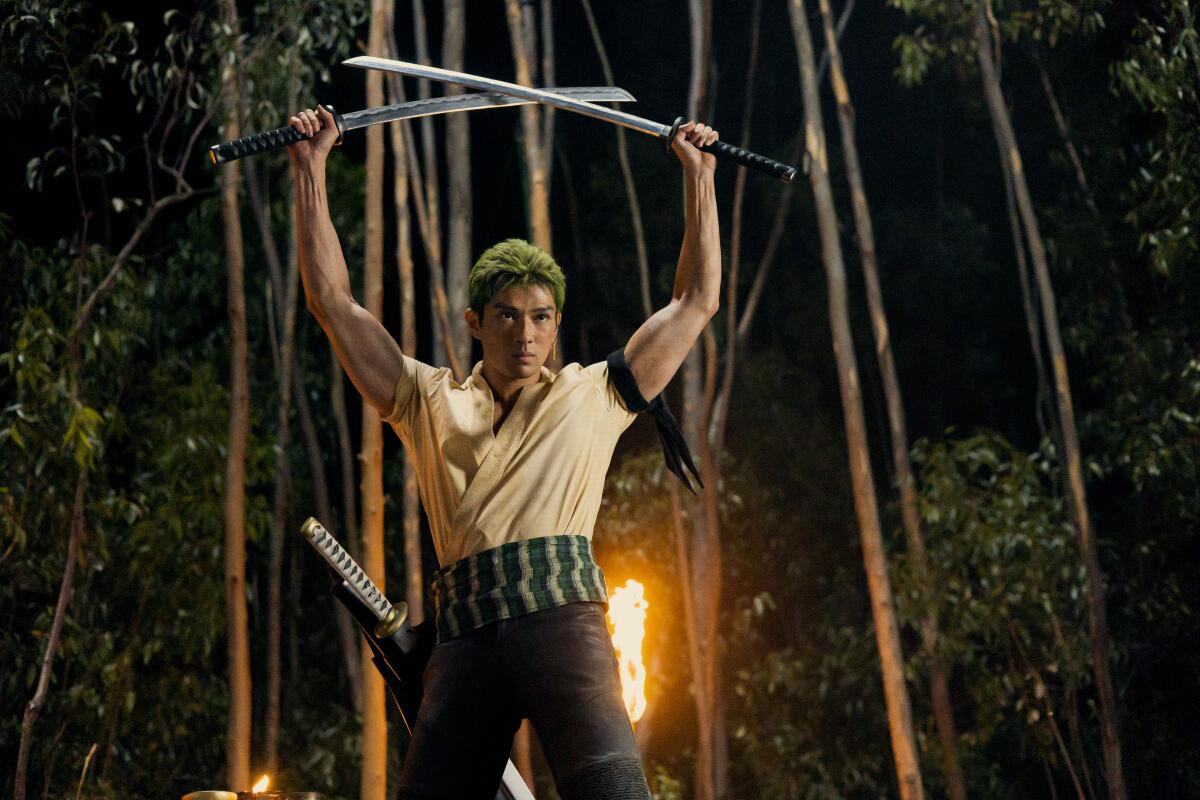
The world of the show, which does look very good — more interesting than the drawings, in fact — is a not unfamiliar mix of period and contemporary styles and technologies. Pirate ships, though fanciful, are of the Captain Hook variety. Cannonballs aside, combat — well-staged and performed, in the tradition of martial arts movies — is almost entirely hand to hand (or sword to sword). There is not much in the way of modern gadgetry — there’s neon, and a strange snail-based (that is to say, magical) system of telephony. Some characters dress like pirates, and others, as in the original, in T-shirts or tropical shirts or suits and dresses cut to contemporary lines.
The story has been streamlined in some respects and built out in others to make it work in flesh and blood; what can seem reasonable in a cartoon can feel ridiculous translated into live action, and sometimes does here. (It is also, oddly or perhaps as an upshot, the least comical version.) Still, an honest attempt has been made to turn the exaggerations of the source material into something recognizably human. If, for the most part, the characters are collections of characteristics — Nami is tough, Zoro stoic, Sanji refined, Usopp nervous — the actors inhabit them attractively. (And as Nami, Rudd does get an emotional arc to play.)
Where it fails, critically if not quite fatally — that is to say, it almost put me off but I did carry through — is with Luffy. Even in two dimensions, the character comes across as little short of insane — pathologically self-confident, completely lacking in impulse control and given to bad decisions that put his friends in danger. He’s meant to be the spirit of the tale, but turns tiresome in human form, where he’s surely supposed to be delightful. That the other characters have thrown in with him — have elected him, tacitly, their leader — feels arbitrary and improbable.
Then again, there are no end of real world examples of people following the pathologically self-confident.
More to Read
The complete guide to home viewing
Get Screen Gab for everything about the TV shows and streaming movies everyone’s talking about.
You may occasionally receive promotional content from the Los Angeles Times.
